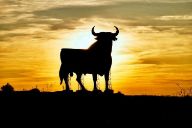“It’s all about the cow”
This dress recreates and honours the image of the cow, the life-sustaining animal of the Herero tribes.
In the past the Herero people were pastoralists, and thus cattle were a major part of their lives - many partly continue this lifestyle up until today. Therefore, cattle are still very valued by the Herero which is why the Herero women worship the cow in their everyday dress. Their headdress is meant to represent the horns of a cow and serves as a continuous reminder of their past as cattle-herding tribes.[Hendrickson 1994, p 32]
In addition to that, the imagery of a cow has a sexual and seductive connotation[McKinley 2013]. A woman that resembles a cow represents the ideal image of a woman. It is an image women aspire to, and in order to reach this goal, Herero women even have a special graceful way of walking( [Hendrickson, Ibid] 7), called sashay, and even a traditional cow dance.
For the women, the dress is therefore a way to correspond to their idea of what an ideal woman should look like. Considering that this dress is worn daily, even on the hottest of days, the importance cows play for the Herero tribes cannot easily be denied or overlooked. As Jim Naughten put it: [It] sounds strange to us but [...] cattle are everything to the Herero, and they see great beauty in them.”
This connection to cows can also be seen looking at another Namibian tribe - the Himba people. The material form of this connection is, however very different (story in link below).

](https://micrio.thingsthattalk.net/EGSBl/views/max/128x128.jpg)
](https://micrio.thingsthattalk.net/bPCOQ/views/max/128x128.jpg)